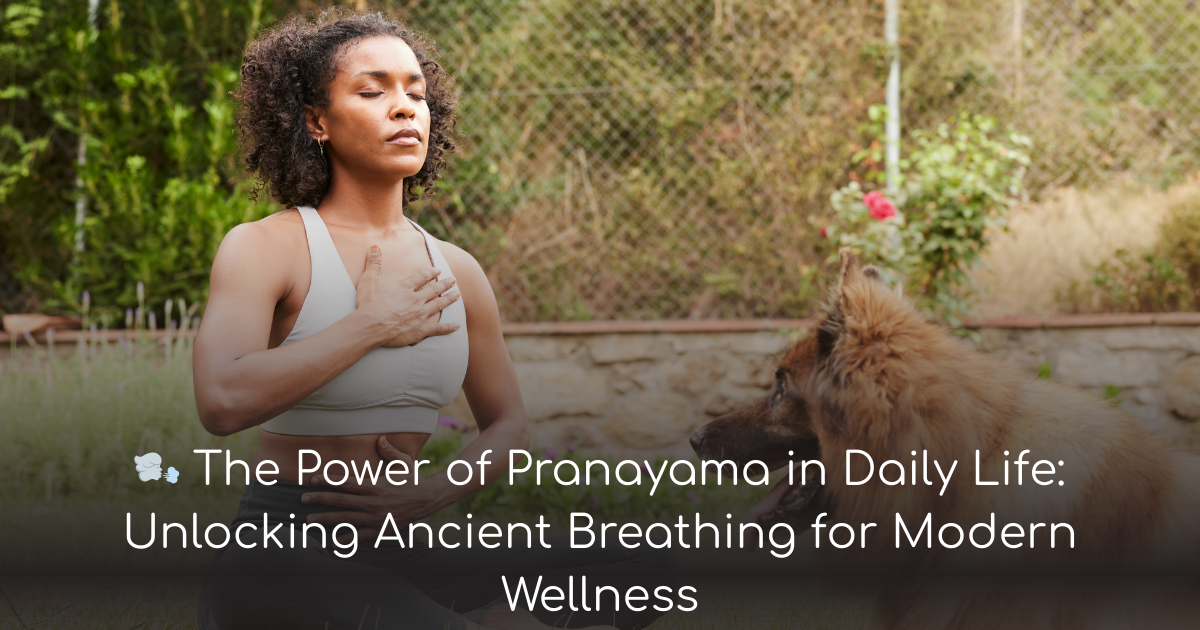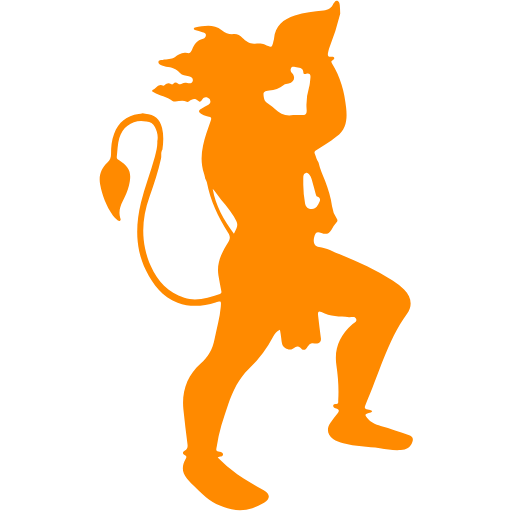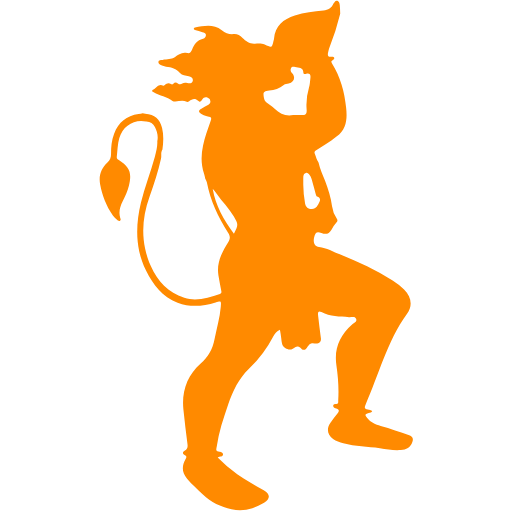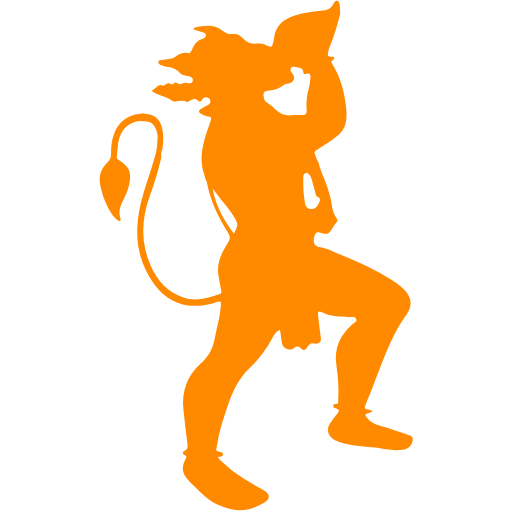how the power of pranayama in daily life improves your health & wellness

Discover the power of Pranayama in daily life. Learn ancient breathing techniques that boost health, reduce stress, and enhance your spiritual journey.
🌟 Introduction: The Breath of Life You’re Missing Out On
In today’s crazy-fast, hyper-digital world, stress, anxiety, and health problems have quietly crept into our daily lives. 📱💼 But guess what? The simplest, most powerful tool to reclaim your calm, clarity, and energy is already within you — your breath! 🌿✨
That’s where Pranayama steps in. Derived from ancient Sanatan Dharma texts and yogic traditions, Pranayama is the art of conscious, controlled breathing. And trust me — the Power of Pranayama in Daily Life is nothing short of magical ✨ when practiced consistently.
From boosting immunity to calming your mind, improving sleep, and enhancing spiritual connection — it’s a treasure you don’t want to miss. Modern science is catching up too, proving what our ancestors knew all along.
In this blog, I’ll be your guide to unlocking this ancient wisdom, and showing how you can weave the Power of Pranayama into your daily life, effortlessly. 🌱💖
🌿 Understanding the Power of Pranayama in Daily Life
Let’s dive deeper into what makes Pranayama such a life-changing practice 🌬️.
🔍 What is Pranayama?
Pranayama is a Sanskrit word: ‘Prana’ means life force or vital energy, and ‘Ayama’ means to regulate or extend. Together, it’s the practice of controlling your breath to balance your energy, emotions, and overall health.
🌸 How Breath Connects Mind, Body & Soul
When you breathe consciously:
-
You slow down your racing thoughts
-
Balance your body’s vital systems
-
And nourish your soul by connecting with the universe’s energy ✨
It’s like a mini detox you can do anytime, anywhere. No fancy equipment. No special diet. Just your breath and a few mindful moments 🧘♂️.
Benefits of Pranayama include:
-
Increased mental clarity 🧠
-
Better immunity 🛡️
-
Reduced anxiety 😌
-
Improved lung capacity 🌬️
-
Spiritual growth 🌸
Sounds good already, right? Let’s keep going!
🌞 Benefits of Pranayama for Daily Living
Why is it called a miracle practice? Because it impacts every layer of your being — physical, mental, emotional, and spiritual.
💪 Physical Health Benefits
-
Boosts lung capacity naturally
-
Improves digestion and metabolism 🍎
-
Increases oxygen supply to every cell
-
Supports heart health 💓
-
Helps in weight management
🧘 Mental & Emotional Health Benefits
-
Stress relief through Pranayama
-
Reduces anxiety, tension, and irritability
-
Enhances memory and concentration 🧠
-
Balances emotions, making you feel calmer and happier
-
Can improve sleep quality 🌙
🌺 Spiritual Growth & Awareness
Pranayama isn’t just about the body — it’s a spiritual doorway too ✨:
-
Activates Chakras and energy centers
-
Deepens meditation practices
-
Heightens awareness of self and surroundings
-
Helps you stay grounded yet connected to the higher self 🙏
No wonder ancient yogis called it the secret key to bliss.
🕰️ Simple Daily Pranayama Routine You Can Follow
Don’t worry — you don’t need to be a yoga pro to start this! Here’s a beginner-friendly Daily Pranayama Routine you can follow.
⏰ Best Time to Practice Pranayama
-
Early morning before sunrise is ideal 🌅
-
Or anytime on an empty stomach
Even 5-10 minutes can work wonders ✨.
📋 Step-by-Step Morning Routine
-
Sit comfortably in a quiet space 🧘♂️
-
Close your eyes and relax
-
Start with Anulom Vilom (Alternate Nostril Breathing) — 5 mins
-
Follow with Bhramari (Humming Bee Breath) — 3 mins
-
Do Kapalbhati (Skull Shining Breath) — 1 min
-
End with Nadi Shodhana (Channel Purification) — 3 mins
-
Sit still for a minute and observe your breath 🌸
⚠️ Precautions and Common Mistakes
-
Never force your breath
-
Avoid after meals
-
Pregnant women and heart patients should consult a doctor before intense practices
-
Focus on slow, steady breathing
🌬️ Exploring Core Pranayama Techniques
Let’s quickly break down some essential Pranayama techniques you can start with:
✨ Beginners’ Techniques
-
Anulom Vilom: Balance mind and body by alternating breaths through nostrils.
-
Bhramari: Relieve stress by humming gently.
✨ Intermediate & Advanced Techniques
-
Kapalbhati: Rapid forceful exhalation clears toxins.
-
Nadi Shodhana: Purifies energy channels and improves focus.
-
Ujjayi: Ocean-like breath for deep relaxation and better sleep.
Health benefits of breathing exercises like these are now backed by research — improved oxygenation, reduced cortisol (stress hormone), and enhanced brain function 🧠.
💫 Let’s continue the next powerful signs, the science behind breathing, and how ancient wisdom meets modern wellness in the next section — you don’t want to miss it!
🌬️ The Science Behind Pranayama: Why It Works 🔬✨
It’s not just ancient wisdom — modern science has proven the power of Pranayama too. 📚 Let’s decode what actually happens in your body and brain when you practice these simple breathing exercises.
🧠 How Pranayama Affects Your Brain
When you control your breath:
-
It signals the parasympathetic nervous system (your rest-and-digest mode) to kick in 🧘♂️
-
Lowers stress hormones like cortisol and adrenaline
-
Enhances alpha brain waves, which promote relaxation and creativity 🎨
-
Boosts oxygen to the brain, improving memory, focus, and mood
Result? You feel calm, centered, and in control — instantly.
❤️ How It Impacts Your Body
-
Increases lung capacity and oxygen absorption 🌬️
-
Improves blood circulation and heart health
-
Balances blood pressure naturally 💓
-
Aids digestion and detoxification
-
Enhances immunity by reducing oxidative stress 🛡️
No wonder yogis looked so ageless and radiant! ✨
🌿 Spiritual & Emotional Healing Through Pranayama 🌸
Pranayama isn’t just physical — it’s a spiritual cleanse too. It purifies your nadis (energy channels), making it easier to connect with your inner self and the universe 🌌.
✨ Pranayama & Chakras
Different Pranayama techniques activate different chakras:
-
🟣 Sahasrara (Crown Chakra): Ujjayi and Bhramari
-
🔵 Ajna (Third Eye): Anulom Vilom, Nadi Shodhana
-
🟢 Anahata (Heart Chakra): Deep, diaphragmatic breathing
This helps release old emotional blockages and invites peace, love, and spiritual clarity. 🌸🧘
Feeling stuck emotionally? 5 minutes of mindful breathing can do what hours of venting can’t. ❤️
📋 How to Integrate Pranayama Into a Busy Lifestyle
Think you don’t have time? Good news — Pranayama fits easily into daily life. Here’s how:
🌞 Morning Routine
Start your day with:
-
5 mins Anulom Vilom
-
3 mins Kapalbhati
-
2 mins Bhramari
✨ Result: Clear head, calm heart, energized body
🌿 Mid-Day Recharge
Feeling sluggish at work?
-
Try Ujjayi breathing for 2 mins
-
Or slow, deep belly breaths at your desk 🪑
✨ Result: Instant focus boost and reduced stress
🌙 Evening Wind-Down
Before bed:
-
3 mins Nadi Shodhana
-
5 mins soft deep breathing
✨ Result: Peaceful sleep, no racing thoughts 🌌💤
Bonus tip: Pair your Pranayama with a short gratitude practice or mantra chanting for even deeper calm ✨🙏
⚠️ Common Mistakes to Avoid in Pranayama 😅
Even though it’s simple, there are a few mistakes people often make:
-
Forcing the breath: Always stay gentle and natural
-
Practicing on a full stomach: Always on empty or light stomach
-
Wrong posture: Keep spine straight and shoulders relaxed
-
Skipping regular practice: Even 5 mins daily is better than none
-
Ignoring medical conditions: If pregnant or with heart issues, consult a yoga expert or doctor
The golden rule? Listen to your body and never strain. 🌸
🌸 Real-Life Success Stories of Pranayama Healing 🙌
People from around the world have transformed their lives with Pranayama. Here are a couple of heartwarming examples:
🧘♂️ Ramesh, 45, Delhi
Battling anxiety and hypertension for years, Ramesh started 10 mins of Pranayama daily on his doctor’s advice. Within 6 weeks:
-
His blood pressure normalized 💓
-
He reported 70% less anxiety
-
Better sleep and digestion
All without medications. 🌿
🌿 Meera, 32, Mumbai
Struggling with insomnia and work stress, Meera began Bhramari and Nadi Shodhana before bed. In just a month:
-
She fell asleep faster 😴
-
Woke up fresher
-
Felt emotionally lighter
Proof that ancient wisdom works wonders even today.
🕉️ The Connection Between Pranayama and Sanatan Dharma 🌼
Pranayama is more than just a health hack — it’s a spiritual practice rooted in the ancient scriptures of Sanatan Dharma. The Bhagavad Gita, Patanjali Yoga Sutras, and various Upanishads describe breath control as a path to self-realization and liberation (Moksha) ✨.
In Sanatan Dharma, controlling the breath is seen as controlling the mind. A calm breath means a calm mind, which leads to a peaceful, fulfilling life 🌸.
Practicing Pranayama is a way of honoring your divine energy — your Prana. 🙏✨
🌟 Conclusion: Make Pranayama Your Daily Wellness Ritual 🌿✨
In a world drowning in stress, gadgets, and distractions, the simple power of your breath is your greatest weapon.
Pranayama isn’t just a breathing technique — it’s a life-changing habit that boosts physical health, calms your mind, heals emotions, and nurtures your soul 🌺.
Whether you want:
-
More focus at work
-
Better sleep
-
Emotional resilience
-
Or a deeper spiritual connection
Pranayama can give it to you.
🌸 Start with 5 minutes today. Stay consistent. Feel the magic unfold. ✨
👉 “Your breath is your power. Control it, and you control your life.” 🌿💖
Why wait for peace and wellness to knock at your door? Unlock it with your breath, starting now. 🚀✨
📌 FAQs on Pranayama 🌿✨
❓1. What is Pranayama? 🤔
Pranayama is an ancient breathing practice that helps regulate your breath to balance the mind, body, and soul. 🌸 It involves various techniques of inhaling and exhaling that reduce stress, boost immunity, and improve focus. 🧘♂️✨
❓2. Can Pranayama really help reduce stress? 😌
Absolutely! Pranayama directly calms your nervous system, lowering the stress hormone cortisol. It slows your breathing and instantly helps you feel relaxed and peaceful. 🌿 Even just 5 minutes of deep breathing can ease tension!
❓3. What is the best time to practice Pranayama? 🌅
The ideal times are early morning or evening in a calm environment. Practicing in the morning energizes you for the day, while doing it in the evening helps release daily stress. 🌸 Always practice on an empty stomach for best results.
❓4. Can pregnant women practice Pranayama? 🤰
Yes, but only gentle, doctor-approved techniques like Anulom Vilom and Bhramari. 🧘♀️ Avoid intense practices like Kapalbhati. It’s important to consult a healthcare professional before starting. 📋✨
❓5. How long should I practice Pranayama daily? ⏳
Start with just 5-10 minutes daily, gradually increasing to 20-30 minutes as you get comfortable. ⏰ Consistency matters more than duration — even a few minutes each day bring great benefits! 🌸
❓6. Are there any side effects of Pranayama? ⚠️
If done incorrectly or too forcefully, you might experience dizziness or discomfort. Always practice gently and avoid strain. People with heart or blood pressure issues should consult their doctor first. 🩺
❓7. Does Pranayama help with weight loss? 🏃♂️
Indirectly, yes! Certain techniques like Kapalbhati stimulate metabolism and help reduce belly fat. 🔥 Plus, stress relief from Pranayama can prevent emotional eating. Combine with a healthy lifestyle for best results. 🍎💪
❓8. What is the difference between Pranayama and meditation? 🧘
Pranayama focuses on breath control, while meditation aims to calm and focus the mind. 🌸 Practicing Pranayama before meditation often helps you enter a deeper meditative state. Both are valuable in their own ways.
❓9. Which Pranayama technique is best for beginners? 🌿
Techniques like Anulom Vilom, Nadi Shodhana, and Bhramari are simple and effective for beginners. 🌸 Avoid more advanced techniques like Kapalbhati until you’re comfortable.
❓10. Can I do Pranayama while watching TV or using my phone? 📱❌
It’s best to practice Pranayama mindfully in a quiet space without distractions. 📵 Even a few focused minutes away from screens make your breathing practice more effective and calming.
❓11. How does Pranayama boost immunity? 🛡️
Pranayama improves oxygen flow and blood circulation, which activates immune cells. 🌿 It also reduces stress, helping your body fight off infections naturally.
❓12. Can children practice Pranayama? 👦👧
Yes! Gentle breathing techniques like Anulom Vilom and Bhramari are safe and beneficial for kids. 🎶 Even 2-5 minutes daily improves focus, emotional health, and calmness. 🌸
❓13. Should gym-goers include Pranayama in their routine? 💪
Definitely! Practicing Pranayama after workouts helps relax muscles and calm the mind. 💥 Techniques like Kapalbhati support faster recovery and improve overall fitness.
❓14. Does Pranayama help control blood pressure? 💓
Yes, deep breathing techniques like Nadi Shodhana naturally lower blood pressure by calming the heart rate and reducing stress hormones. 🩺 Regular practice can support medical treatment (consult your doctor).
❓15. Can Pranayama enhance spirituality? 🕉️
Absolutely! Pranayama is not just physical exercise but a spiritual practice that strengthens your mind, life force, and soul connection. 🌸 It helps balance chakras and deepens self-awareness and inner peace.
Remember, the power of Pranayama in daily life is not about perfection but progress. Every mindful breath you take is a step closer to better health, calmness, and spiritual growth. 🌿✨ Start small, stay consistent, and watch how this ancient practice transforms your life—one breath at a time. You’ve got this! 💪💖
Ready to unlock your inner energy and embrace wellness? Start your Pranayama journey today! Take just 5 minutes to breathe deeply and feel the difference. 🌬️💫 Don’t wait—your healthiest, happiest self is just a breath away!









